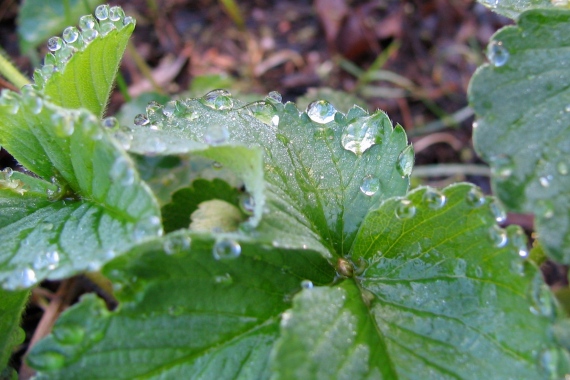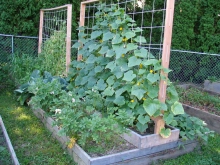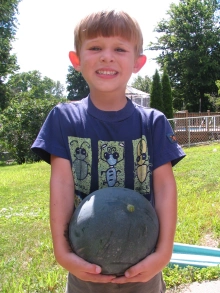
Conventional wisdom says that when the hardneck garlic you are growing sends up scapes, you should cut them off so that the plant doesn’t spend any energy growing a part that you won’t use. If you cut off the scapes, they say, you’ll surely get bigger garlic bulbs. That could be so, but I was curious this year to see what, exactly, will grow if you leave the scape on the plant.

This garlic “flower” (the bulbil) has been on the plant for about 3 weeks after I would have normally cut off the scapes. It has grown plump, and I found myself curious about what lies inside.

I tore open the covering to reveal about two dozen tiny garlic cloves. Freaking BABY GARLIC! Each one is basically a “seed clove” that will propagate the parent garlic variety. Garlic Seeds? Yes please.

I have read that planting these very tiny cloves, will result in an undersized garlic bulb growing the next year. If you turn around and replant for 2 or 3 years in a row, the resulting crops will get bigger and bigger each year until you are producing garlic the size of the original parent plants.

One reason to plant from bulbils instead of (or in addition to) cloves, is that it is a very fast way to ramp up your production of any given variety. Whereas planting the 10 cloves from the main garlic bulb will increase your planting stock at a decent rate, planting all the cloves and all the bulbils will increase your stock twice as fast or faster. In 4 year’s time, you could turn 1 pound of seed garlic into a crop that covers an entire acre.

Another very important reason to plant the bulbil’s mini-cloves is that if your crop’s roots become infected with a soil-borne disease in any given year, it is very likely that the bulbils, living 2-3 feet up above the ground, will NOT share the infection.
Needless to say, I am going to be growing an experimental container of these for next year. I tore the ones in these photos off the parent plant too soon, but there are still a dozen or more in the garden that I’ll cure with the rest of the garlic harvest.
So WHY does the the garlic grow bulbils? If left unharvested in the yard or field, the top of the garlic plant would brown, wither, and fall over. The bulbil would find itself touching the ground in a location about 3 feet from where the parent clove grew. The winter snow would press it down and in the spring it would root itself right there. In this way a hardneck garlic patch will expand itself and keep reseeding, potentially forever.
















































Recent Comments